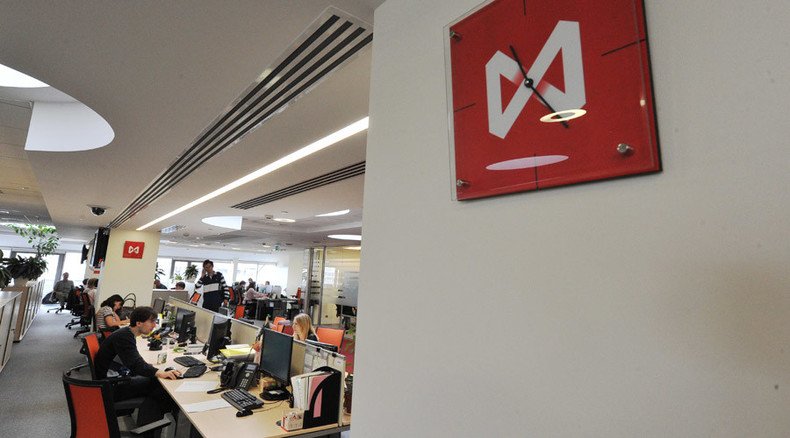Russia overtakes China as most attractive BRICS country for investment - Bloomberg

The Russian market has replaced China to become the most attractive BRICS country for investors in 2015, according to Bloomberg. Pricier oil that has rebounded from a six-year low and easing political risks make it the best BRICS investment bet.
Analysts polled by Bloomberg say Russian shares are undervalued, by up to a half compared with other BRICS countries. Russian shares can be more profitable if the political risks continue to reduce.
One of the two key Russian indices – a ruble denominated MICEX – trades at 5.9 times the projected earnings of its members. For example, Brazil’s Ibovespa, Sao Paulo Stock Exchange Index, shows 12.6 multiples, being the second cheapest in the BRICS. China, India and South Africa are above 15.
“Our models are telling us to buy Russia. There is a very strong turnaround potential. It’s an increasingly difficult call to get right because of politics. I’d be happy to pull the trigger in the next two to three months,” Tim Love, a London-based investment manager at GAM told Bloomberg. GAM’s assets are estimated at $130 billion.
READ MORE: What’s the real story behind the $3.8 trillion Chinese correction?
Bloomberg says that in nominal terms, the MICEX has increased by 18 percent in 2015, 4 percentage points less than the increase in the Shanghai Composite Index.However, a record decline in the volatility of the Russian market, along with the increased price fluctuations in China allows profit from investments in Russia and China, with a coefficient of 1 and 0.6 points respectively.
READ MORE: Russian ruble seen as world’s best performing currency, hits 2015 high
The situation has dramatically changed in 2015, says Bloomberg. While the Chinese markets have lost about $4 trillion, or 30 percent in value in June-July, oil prices have stabilized at above $55 per barrel and the ceasefire in eastern Ukraine has settled.
As a result, “a measure of expected price swings, as signaled by options prices, has more than halved to 28 percent, the steepest drop since at least 2006, the earliest date records go back to,” says Maria Levitov, the author of the column.
This is a big contrast to December, when Russian stocks lost almost 9 percent and the ruble hit a record low, making the central bank raise annual interest rates to 17 percent, the highest in more than 10 years.
Since then, the central bank has decreased the rate several times, fixing it at 11.5 percent from June 16.
In April Bloomberg called the Russian ruble the world’s best performing currency of 2015. At its peak it was trading at about 49 to the dollar, but has seen a 13 percent downturn since then.
OPEC’s June decision not to cut crude output is one of the key factors. The Russian Minister of Economic Development Aleksey Ulyukayev says the ruble’s weakness due to low crude prices will be temporary, and an exchange rate of 55 to the dollar, plus or minus 2-3 rubles, is the currency’s natural level.












